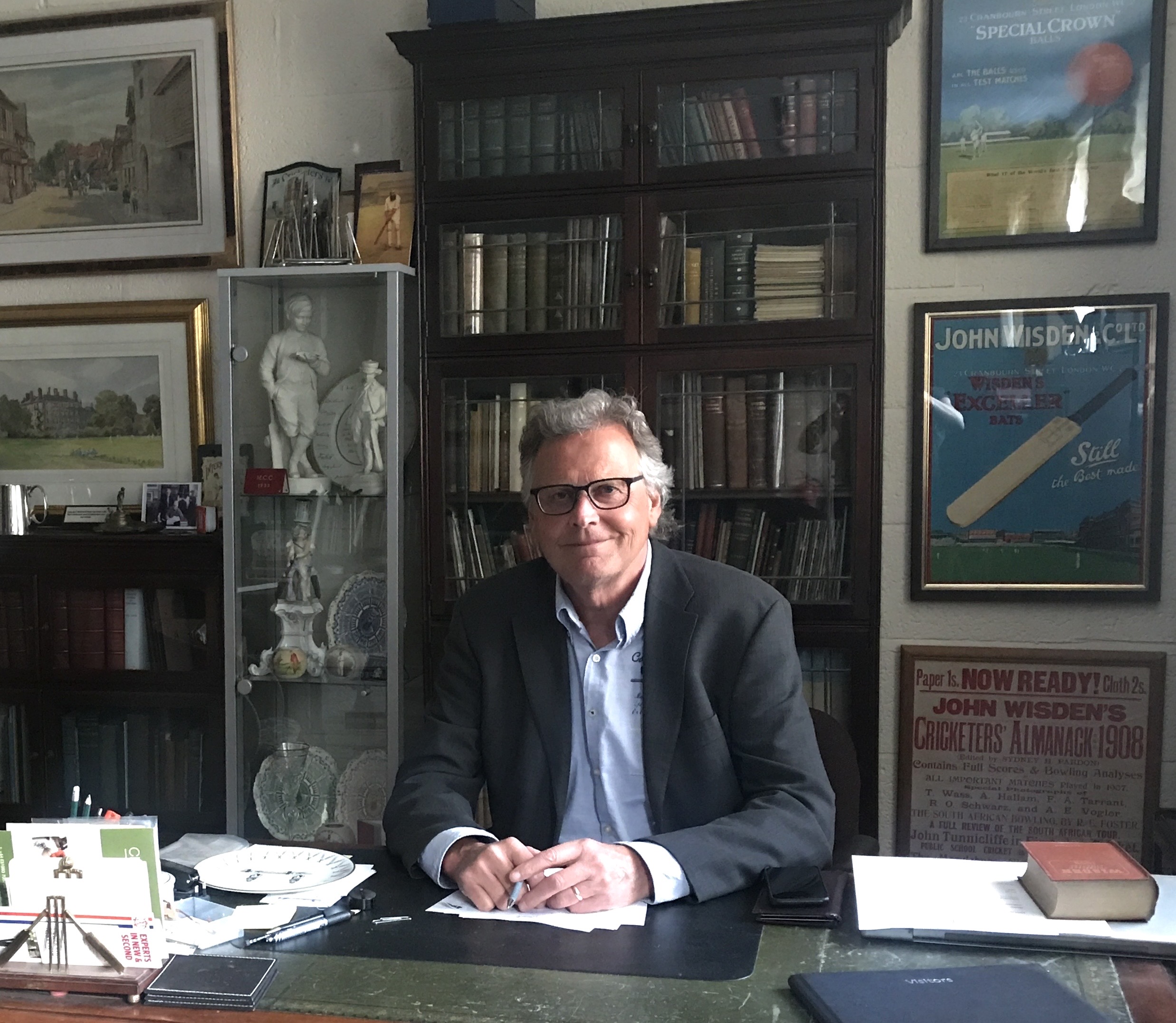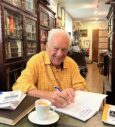The History of Cricket Book Selling
Martin Chandler |
I am sure I am not the only bibliophile who feels that frisson of excitement every time I see a new e-alert from Boundary Books has dropped into my inbox. There have been more than 700 of them now, to be exact 736, but I have to say that the latest is the first that has inspired me to want to write about what I have seen.
For those who have not seen it the alert can be accessed here. The subject matter will be fascinating to some of us, and set me thinking about how much the way in which the acquisition of books and other items of cricketing memorabilia has changed over my time as a collector.
Which I suppose means I need to give away some personal information before I go any further. I started collecting, strictly only Wisdens and other books in those days, in 1985. Seven years later my second child was born, and her elder brother had by then learned how to open a bookcase. Mindful of the way I treated my own father’s Wisdens as a child my collection went into storage.
‘Out of sight is out of mind’ is one of my favourite truisms, and proved entirely accurate here. With my books boxed up in the loft for the next dozen years I did nothing more than buy Wisden each April. Located well away from prying little hands on the top shelf of the one book case I permitted myself in those days they never came to any harm.
By 2005 life had changed. I had moved house and my children, on those occasions when they visited, were no longer a danger to fragile items of memorabilia. As importantly my gloomy prediction that the Ashes would never be regained in my life time had been shown, in that glorious summer, to be unduly pessimistic. There was no better time to renew my interest in the books and I did. This time it has probably become an obsession rather than just a hobby, but at least I am still capable of engaging in conversation about subjects other than cricket, occasionally.
The catalyst for my initial interest in 1985 was a desire to learn more about the famous ‘Bodyline’ series a subject which, despite the acquisition of all the books about it as well as a decent selection of the pamphlets and ephemera, continues to fascinate me to this day.
So I bought a copy of The Cricketer and wrote to all of the book dealers listed in the line ads asking for catalogues. In those days they were John McKenzie, Martin Wood, Ian Dyer, EO Kirwan, Almeida Books, Valentine Books and Cricket Libraries. Whenever the paper catalogues appeared the routine was to read them as quickly as possible and get an order in the post with a cheque marked as not exceeding a certain figure, given that it was almost certain that some of my order would have already sold.
By the time I started collecting again the internet had arrived, and only John McKenzie was still issuing regular paper catalogues. Martin Wood and the business Ian Dyer had started were online, and Christopher Saunders had come along during my hiatus and he did and continued to issue print catalogues alongside his website. Others were online too, and I got in touch with Boundary Books and Bodyline Books at a stage where they each had just a few paper catalogues left to send out before moving towards a completely on line business model.
I also realised at this stage that there were dealers in Australia, Roger Page and Ken Piesse. Certainly in my time as a collector Ken Piesse has never sent out paper catalogues, but Roger did for some time. Now in his ninetieth year and still trading Roger, with whom I have had a long association, still issues his catalogues in the same style, although he does now send them by email.
But to return to the matter in hand, e-alert 736. This is much more than a vehicle from which Mike Down can advertise his wares. I have always known that the whole question of bibliography is a particular interest of his and if 736 is not quite a treatise on the history of specialist cricket booksellers it is certainly something approaching that.
So for those of us who are under the spell of the literature of the game it is a joy to see images of the earliest catalogues that appeared and to understand a little about how the market place we all enjoy dabbling in developed.
It is a matter of some regret that, to date anyway, no one has written a decent book on the subject of cricket’s book and memorabilia dealers. I dare say one may appear one day, and in the meantime all is not quite lost as the essential facts, in terms of a comprehensive listing of the catalogues of the main players to 1977 does exist in the form of a booklet by David Rayvern Allen. A copy of this elusive limited edition appeared in e-alert 734, and doubtless sold but doubtless a direct enquiry would elicit confirmation of that and whether or not Mike has another copy. If all else fails there is another way of obtaining the information, as the contents of the booklet originally appeared in The Journal of the Cricket Society.

As 736 explains the first dealer was AJ Gaston, a man who had many cricketing interests in addition to selling books. He issued his first catalogue in 1890. For many years there was only one major player in the market, and after the war that was Epworth Press in London. Quite why a religious publisher became the world’s leading cricket bookseller is an interesting story in itself and the man involved, Leslie Gutteridge, a curious character. Had it not been for the passing of Rayvern Allen Boundary Books would by now have published a biography of Gutteridge. It seems that will not now happen, but anyone who chooses to visit the showroom in Stanford in the Vale will, I have no doubt, be given the flavour of Gutteridge, who had the sort of life that would not normally be expected of a dealer in antiquarian books.
And Gutteridge is not the only dealer of whom stories abound in Stanford in the Vale. Sadly I missed the opportunity to have dealings with EK ‘Ted’ Brown by a few months, but Mike knew him well and, a few years ago, published his biography. In contrast to Gutteridge there are no skeletons in the Ted Brown’s cupboard, but he is no less interesting for that.
736 also hints at an interesting back story to Martin Wood, and of course there is one. I will leave it to Mike to tell you about how he started his business, but the controversial incident referred to in 736 relates to an occasion when Wood deliberately damaged a County Championship pitch in order, if I recall correctly, to assist Kent to win the title. Frustratingly I cannot readily find the edition of The Cricketer that reported the episode, but from memory I am pretty sure an appearance before the local magistrates followed.
It may well be, these musings following the event, that most of e-alert 736 has already sold, something which is always a risk where so many unique items are on offer. That is not to say however that an enquiry is not worthwhile, and even if that is answered in the negative the showroom is still well worth a visit. There is a huge amount of interesting stock there, and in truth far too much to take in in a single visit.
And I can also give some advice as to how to get ahead of the curve. If you do choose to visit whilst browsing you will probably see a couple of small piles of items that appear to be out of place – they will almost certainly be the next couple of e-alerts, and thus available for a personalised preview.

Boundary Books’ email address is mike@boundarybooks.com and their telephone number 01235 751021







Leave a comment